Over at the Guardian, Martha Gill argues that a shortage of “Mr Rights” is why the birth rate has fallen so much in developed countries. Specifically, Gill states that “the dramatic rise in childless women – and their inability to find the right partner – is driving a good deal of the rich world’s birthrate fall.”
This is not correct.
Mathematically speaking, birth rates can fall because (1) more woman have zero children or (2) woman who have children have less of them. The Current Population Survey’s Fertility Supplement provides data that makes it possible to distinguish between the two.
According to this data, lifetime births per woman declined from 3.1 to 2.0 between 1976 and 2020, a fall of 37%.
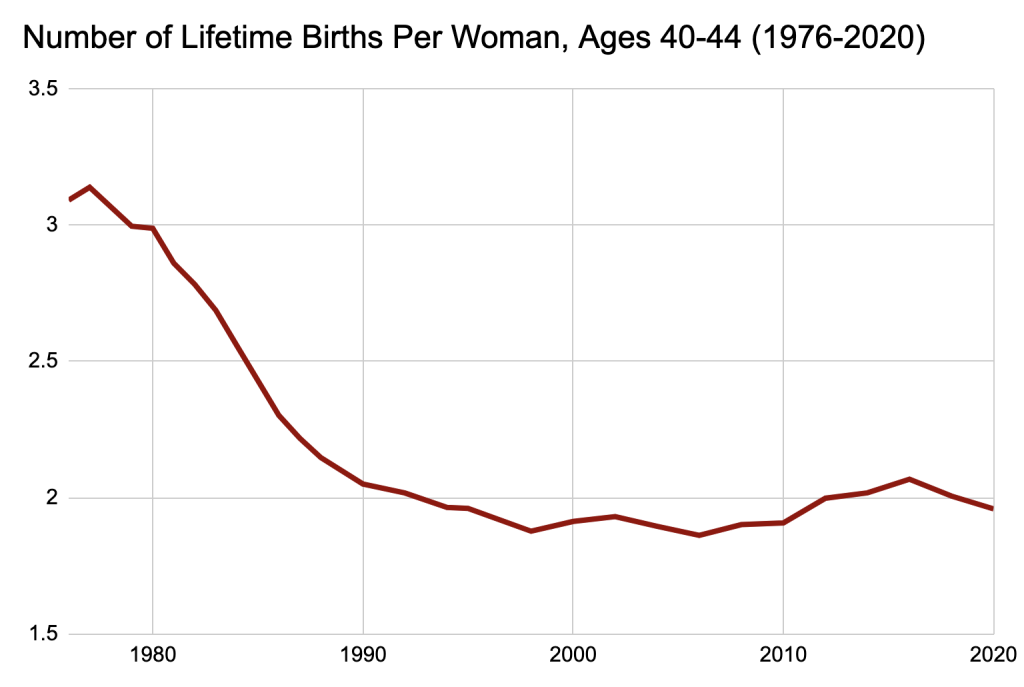
During this same period, the percent of women who had at least one child declined from 90% to 83%, a fall of 7%. In the last 15 years or so, the percent of woman who never had children has actually declined.
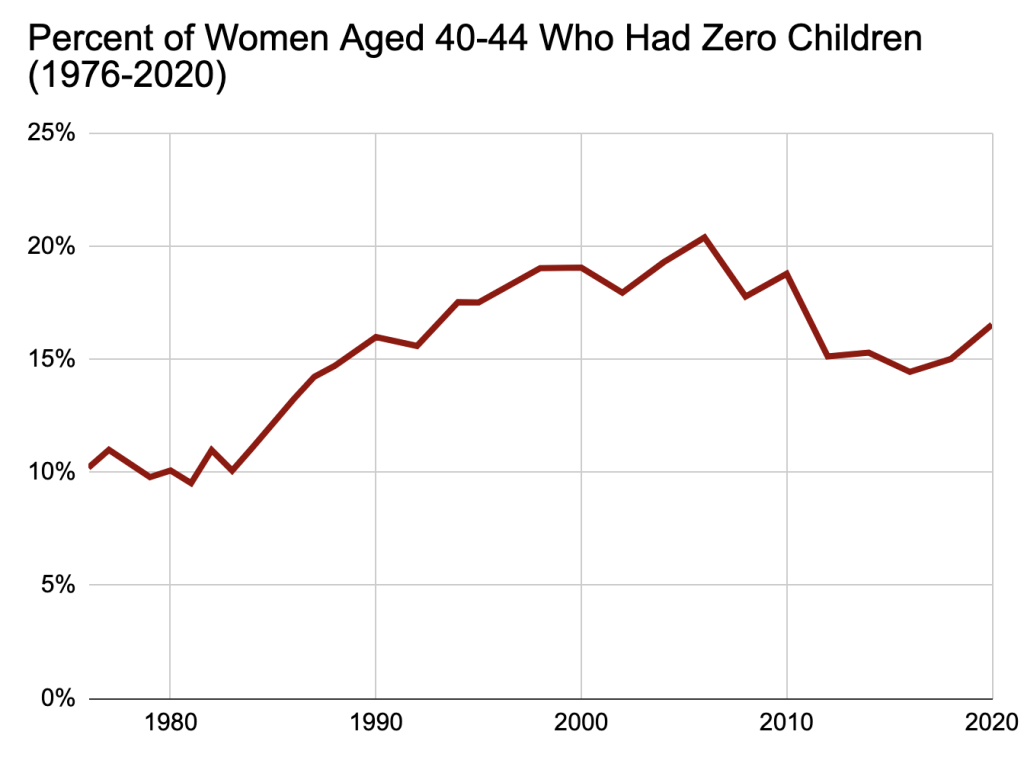
During this same period, the number of births per mother decreased from 3.4 to 2.3, a fall of 32%.
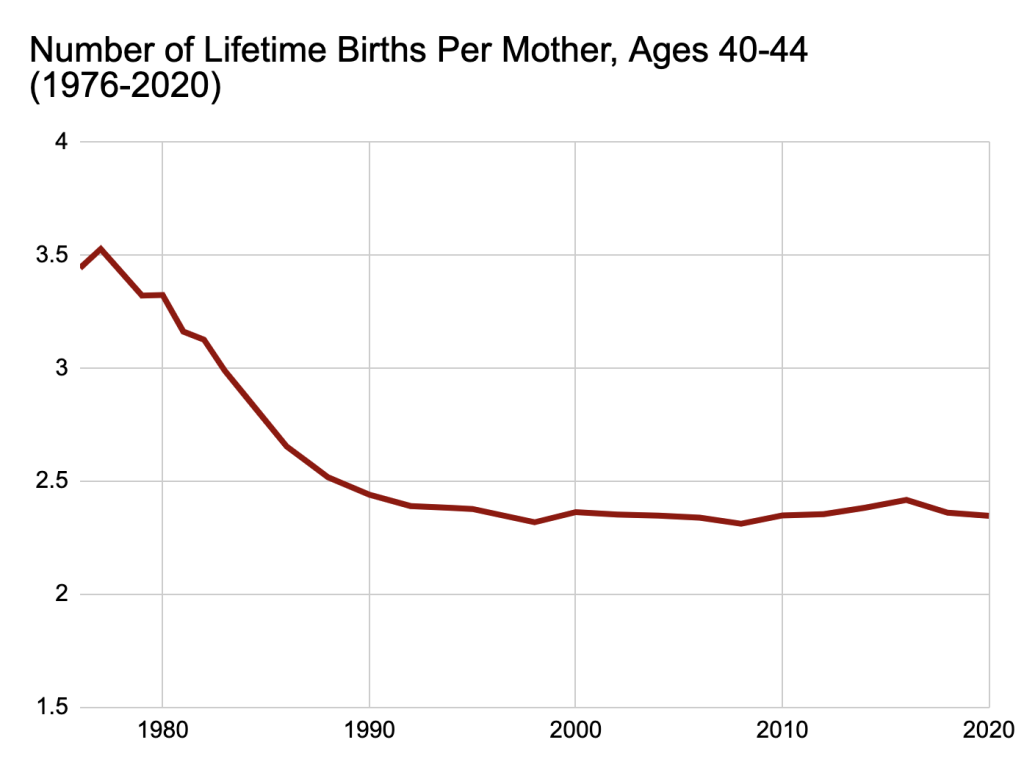
Using this data, we can create a counterfactual in which childlessness rates remained at 1976 levels over this entire period. When we do that while holding all else equal, the birth rate barely budges.
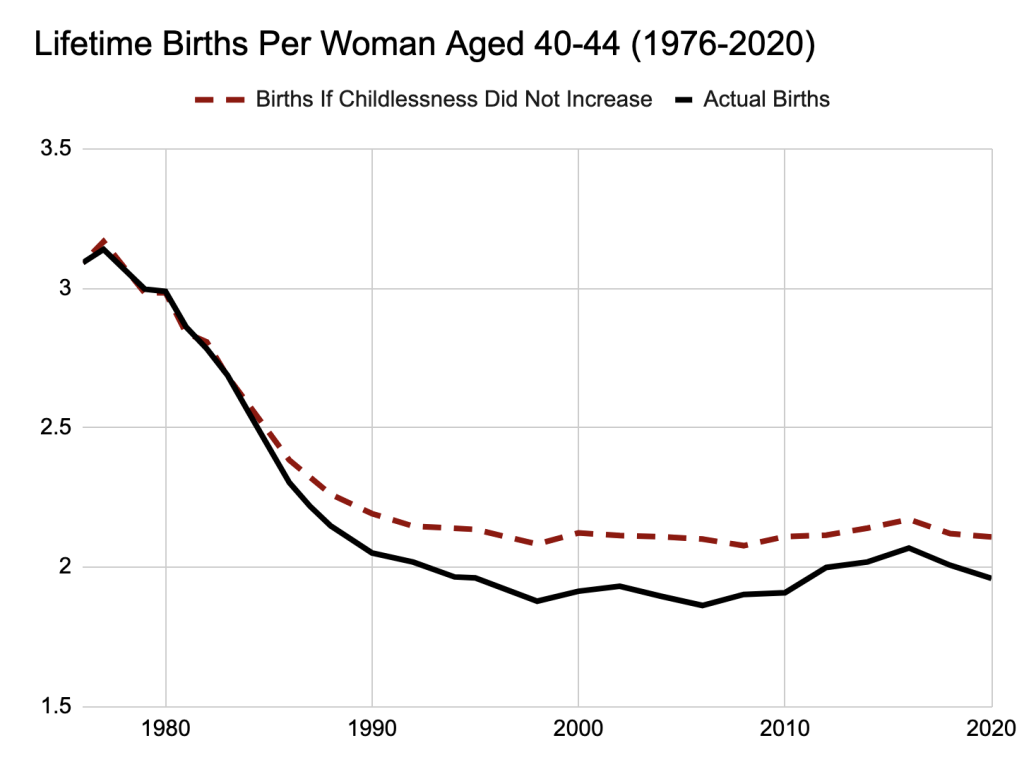
During this period, in the highest years, the rise in childlessness accounted for less than 20 percent of the overall decline in births relative to 1976. In 2020, it accounted for only 13 percent of the decline in births relative to 1976.
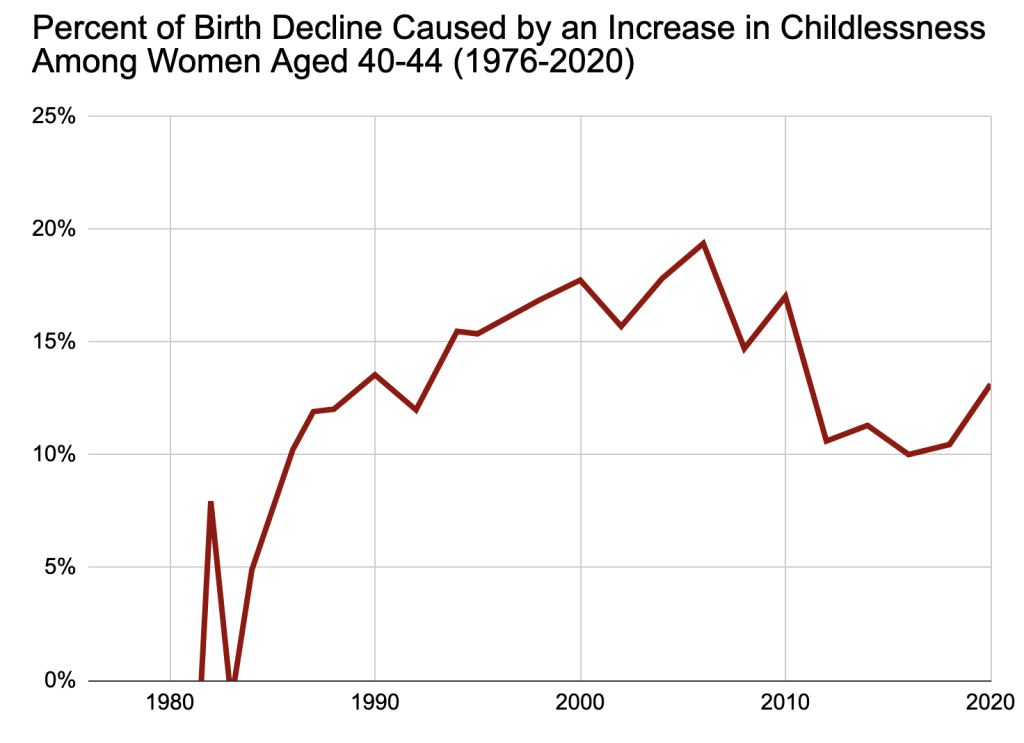
What this tells us is that the vast majority of the decline in births has come, not from more woman having zero children, but rather from women who have children having less of them.
This is the exact opposite of what Gill says.